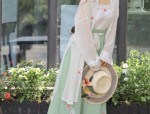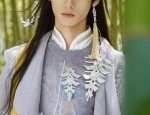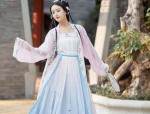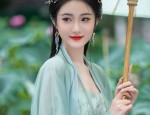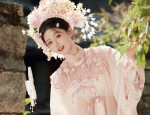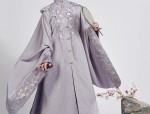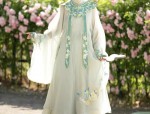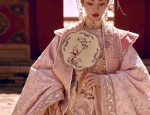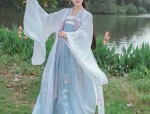Ancient Charm of Hanfu Headdresses and Wigs:A Journey into Traditional Chinese Beauty
In the realm of traditional Chinese culture, Hanfu attire has long been a symbol of elegance and beauty. A pivotal aspect of this attire is the exquisite headdresses and wigs that embody the essence of ancient Chinese aesthetics. These hair accessories are not just mere ornaments; they are a gateway to understanding the rich history and artistry of Hanfu culture.
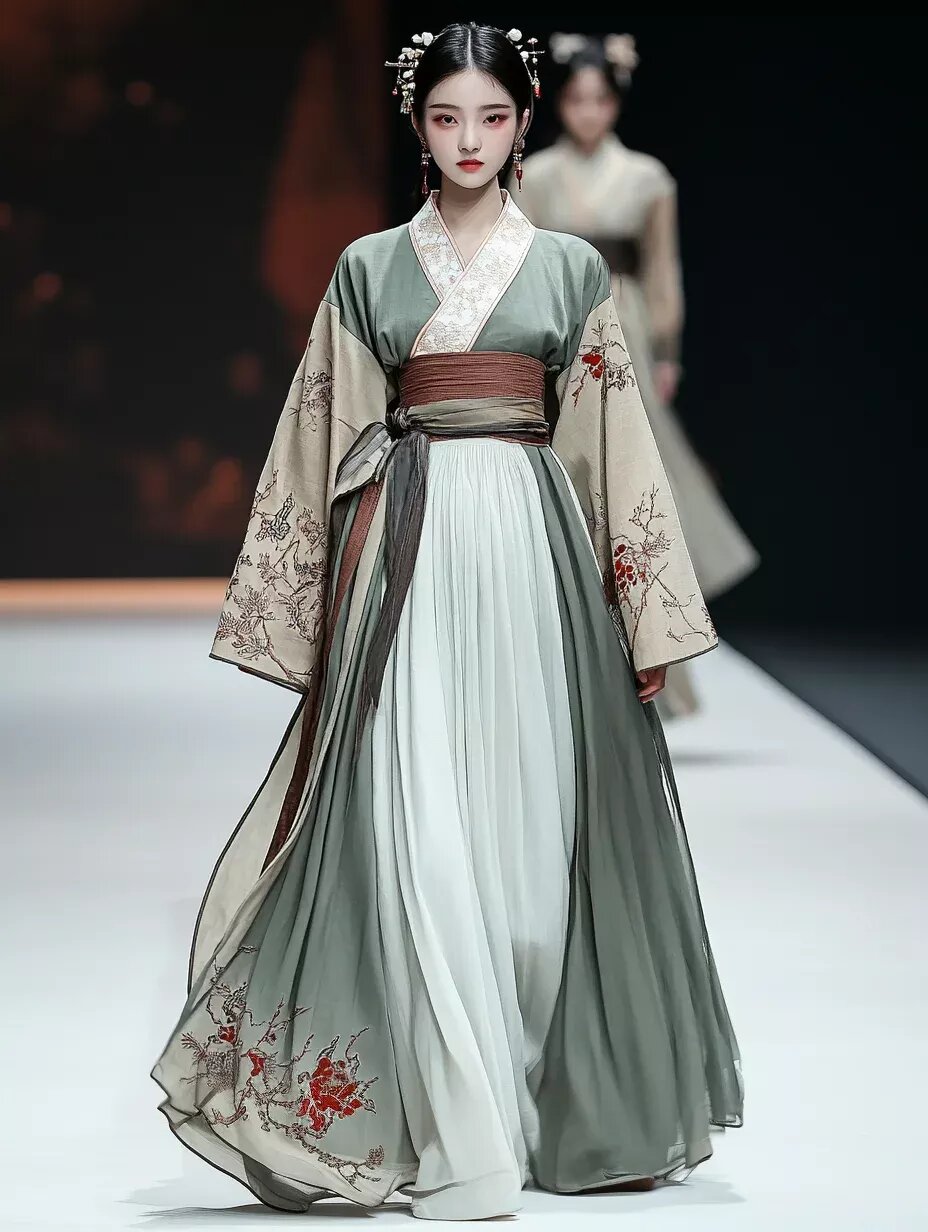
The art of Hanfu headdresses and wigs dates back to the Zhou Dynasty, when women began adorning their hair with various ornaments to enhance beauty and signify status. Over centuries, these headdresses evolved to become a blend of practicality and aesthetics, reflecting the cultural values and fashion trends of each era.
The materials used in the making of these headdresses are diverse, ranging from silk,纱(yarn), flowers, jade, wood, and even precious metals. Each material holds a unique significance and symbolizes something specific in Chinese culture. For instance, silk represents elegance and luxury, while flowers symbolize beauty and purity. The intricate craftsmanship involved in their creation further showcases the skilled craftsmanship of Chinese artisans.
The designs of Hanfu headdresses and wigs are as varied as they come, with each design embodying a different aspect of ancient Chinese culture. Some designs are simple yet elegant, featuring elegant floral patterns or intricate knots, while others are more complex and ornate, featuring patterns that tell stories from Chinese mythology or historical events. These designs not only enhance the wearer's beauty but also act as a canvas for storytelling and cultural expression.
One of the most fascinating aspects of Hanfu headdresses and wigs is their adaptability. Despite being rooted in ancient culture, these hair accessories have managed to evolve with time, incorporating modern elements and designs to cater to the tastes of modern wearers. This adaptability not only preserves the essence of traditional Hanfu culture but also allows it to thrive in modern times.
Moreover, Hanfu headdresses and wigs are not just confined to special occasions or festivals; they have become a part of everyday fashion for many people. Their versatility allows them to be paired with different styles of Hanfu attire, making them suitable for various occasions and events. This widespread adoption is a testament to the enduring charm and appeal of traditional Chinese culture.
In conclusion, Hanfu headdresses and wigs are not just hair accessories; they are a gateway to understanding the rich history and culture of China. They embody the essence of ancient Chinese aesthetics and continue to captivate hearts even in modern times. Their adaptability, versatility, and craftsmanship make them a treasured part of traditional Chinese culture that continues to thrive in modern society. As we delve deeper into the beauty and history of Hanfu headdresses and wigs, we are transported to a world of rich cultural heritage and traditional elegance.

 Previous Post
Previous Post

